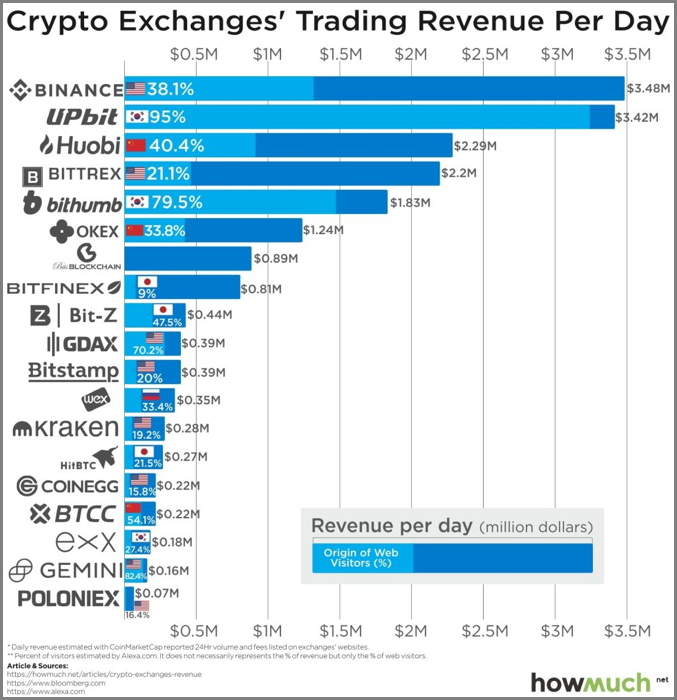 As cryptocurrencies gained traction over the past decade, coin exchanges built the necessary infrastructure to ignite this phenomenon. Gone are the days when you had to search for a trustworthy entity to deposit and exchange your cryptocurrency, whatever the particular token or fiat currency required for a domestic transaction. Price stability has followed this miraculous growth, but the road has not been easy. Largely unregulated and undercapitalized, many exchanges have been hacked for considerable sums of money, Mt. Cox being the largest bankruptcy on record, losing $473 million.
As cryptocurrencies gained traction over the past decade, coin exchanges built the necessary infrastructure to ignite this phenomenon. Gone are the days when you had to search for a trustworthy entity to deposit and exchange your cryptocurrency, whatever the particular token or fiat currency required for a domestic transaction. Price stability has followed this miraculous growth, but the road has not been easy. Largely unregulated and undercapitalized, many exchanges have been hacked for considerable sums of money, Mt. Cox being the largest bankruptcy on record, losing $473 million.
The exchanges are privately held, and few, if any, report details related to ownership, headquarters location, or financial results for the firm, except what may be reported to data aggregators that produced the following diagram:

Although unregulated, recent surveys purport that 88% of exchanges favor regulation. The industry needs the credibility and price stability that regulatory oversight can bring, and it would also help to curb the negative press that continually appears that criticizes the lack of adequate security protocols, operating standards, and consumer protections accepted as basic requirements of other regulated exchanges.
What types of bad press have recently appeared? The Wall Street Journal complains that, “$88.6 Million in Illicit Funds Funneled Through Cryptocurrency Exchanges.” Reuters cited a new report that contended that, “New York attorney general’s office concludes many cryptocurrency exchanges lack safeguards to ensure ‘fairness, integrity and security’.” Lastly, a Swiss banking group opined that, “Crypto exchanges must face up to responsibilities as they mature.” There is also an ongoing debate that exchanges, when reporting to aggregators, are inflating volume data for a variety of reasons.
Will this fledgling industry, most of the exchanges listed are new, make the changes necessary for more credible acceptance? Most analysts believe that the exchanges have no choice. The rallying cry for years has been: “Wait until institutional investors embrace crypto.” At that point, volumes and valuations may skyrocket once again, as they did back in late 2017. According to Zeeshan Feroz, chief executive of the UK division of Coinbase (GDAX), “In many ways, I think the crypto market’s structure will eventually mirror that of traditional markets.”
What are institutional buyers doing today? Most hedge funds go through the backdoor by using Over-the-Counter methods to handle transactions. Price volatility is a major issue with large-valued transactions, a problem that exchanges cannot adequately address today. One OTC trading manager noted that, “The Wild West days of crypto are really turning the corner. Buyers such as hedge funds have replaced high-net-worth individuals as the biggest buyers of large swaths of digital coins worth more than $100,000 through private transactions.”
For the very reason noted above, brokerage firms have been adding crypto divisions to their existing framework in order to serve the needs of their large institutional clients. There is now room for convenience-oriented brokers to thrive, as well, on a domestic level, where the need is cost-justified. As with exchanges, the brokers can act as a market maker, where they earn revenue for the Bid/Ask spread, or simply charge a direct fee for using their platform matches buyers with sellers. Platforms do vary, but most consider that Coinbase has the “blue-chip among crypto platforms.” There are several online entities that continually review and rank these exchanges for service quality, fees and charges, and ease of use of their trading platform.